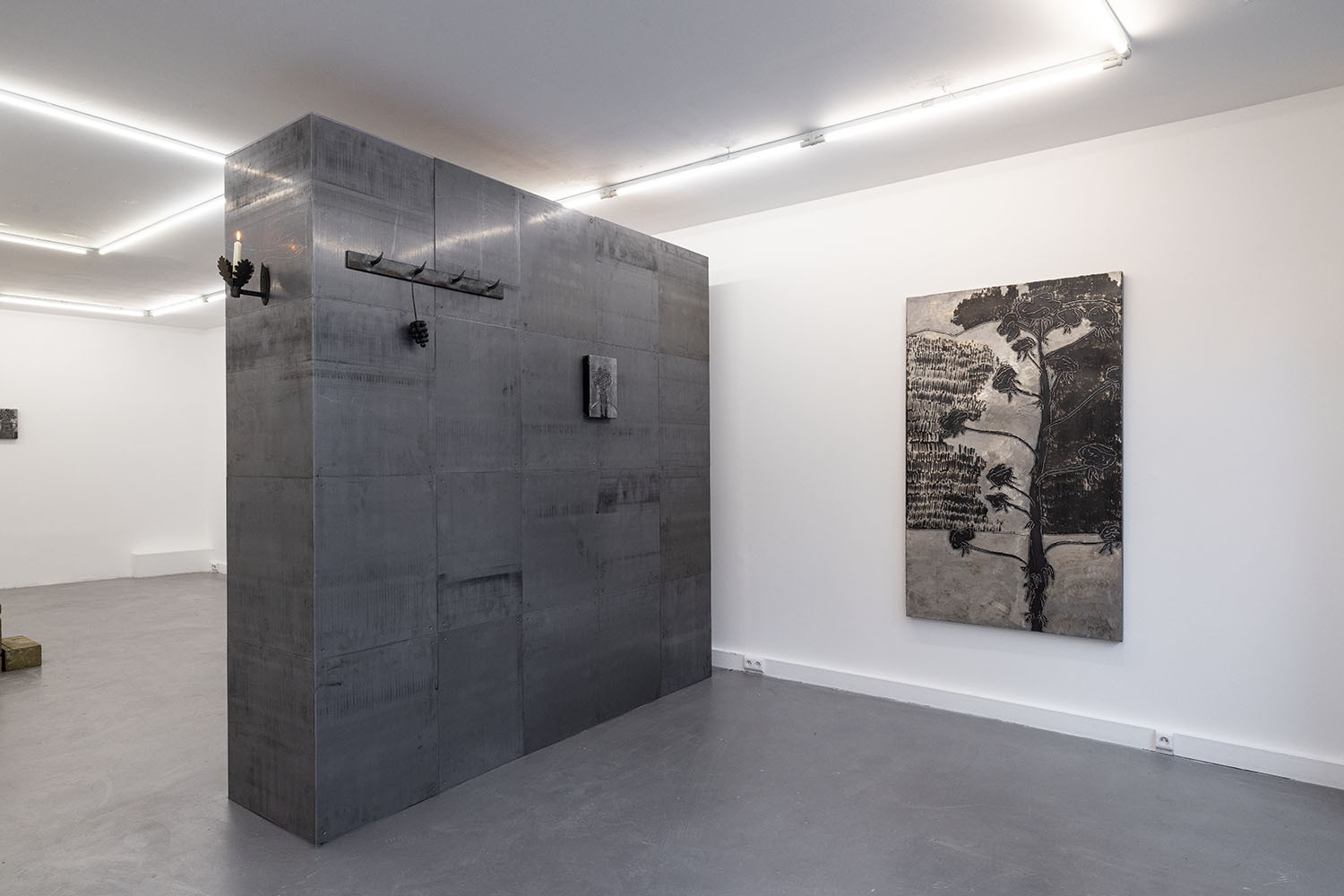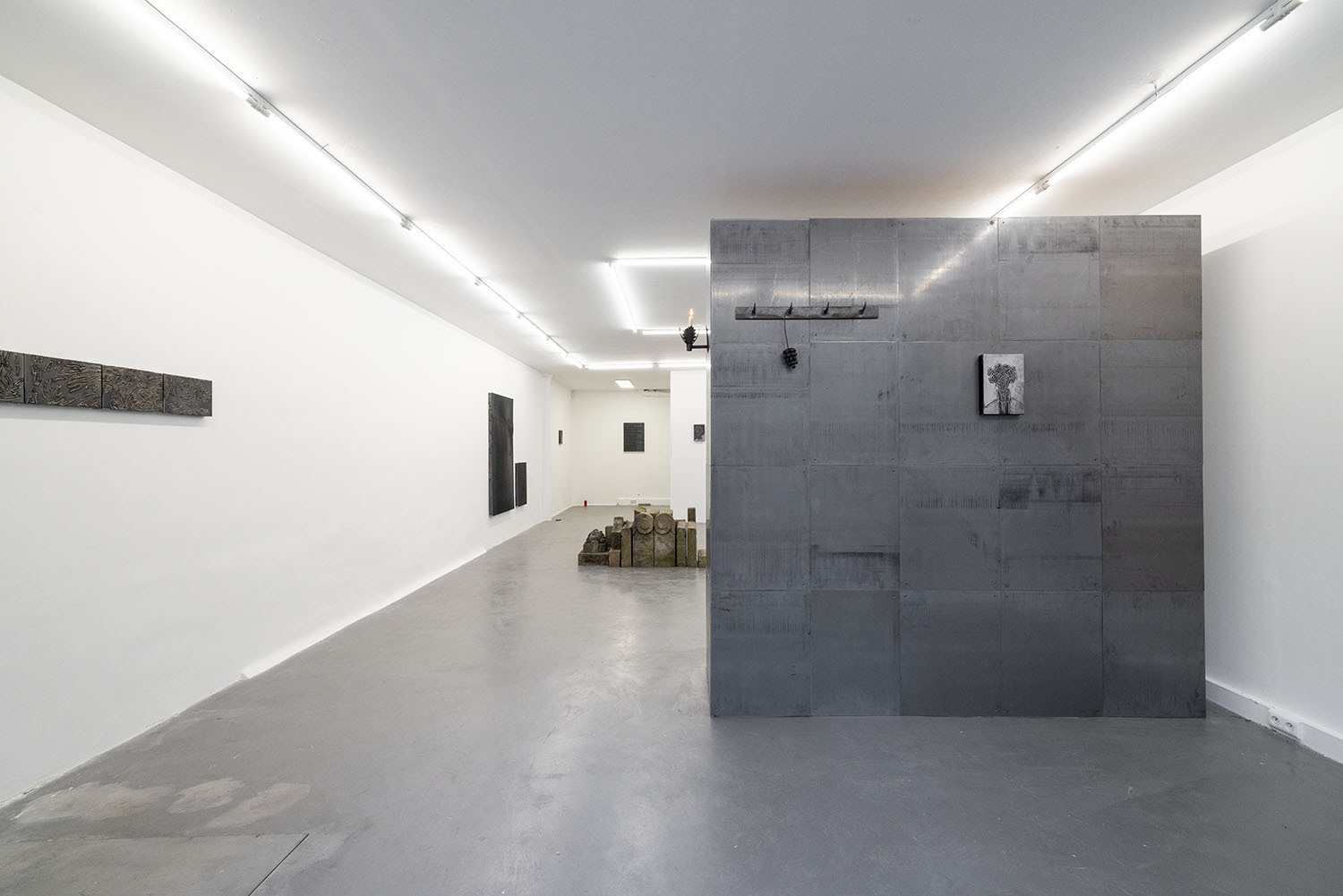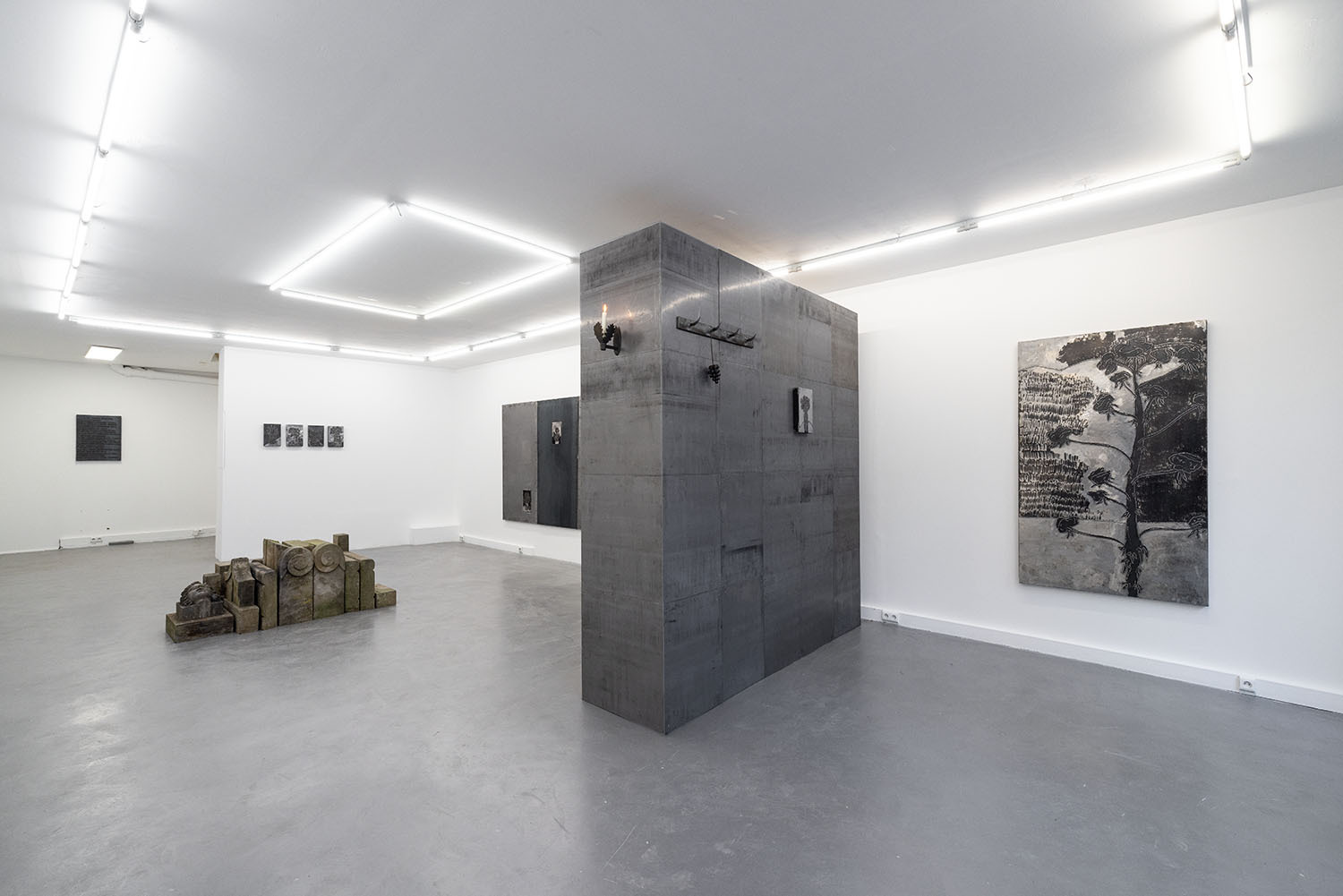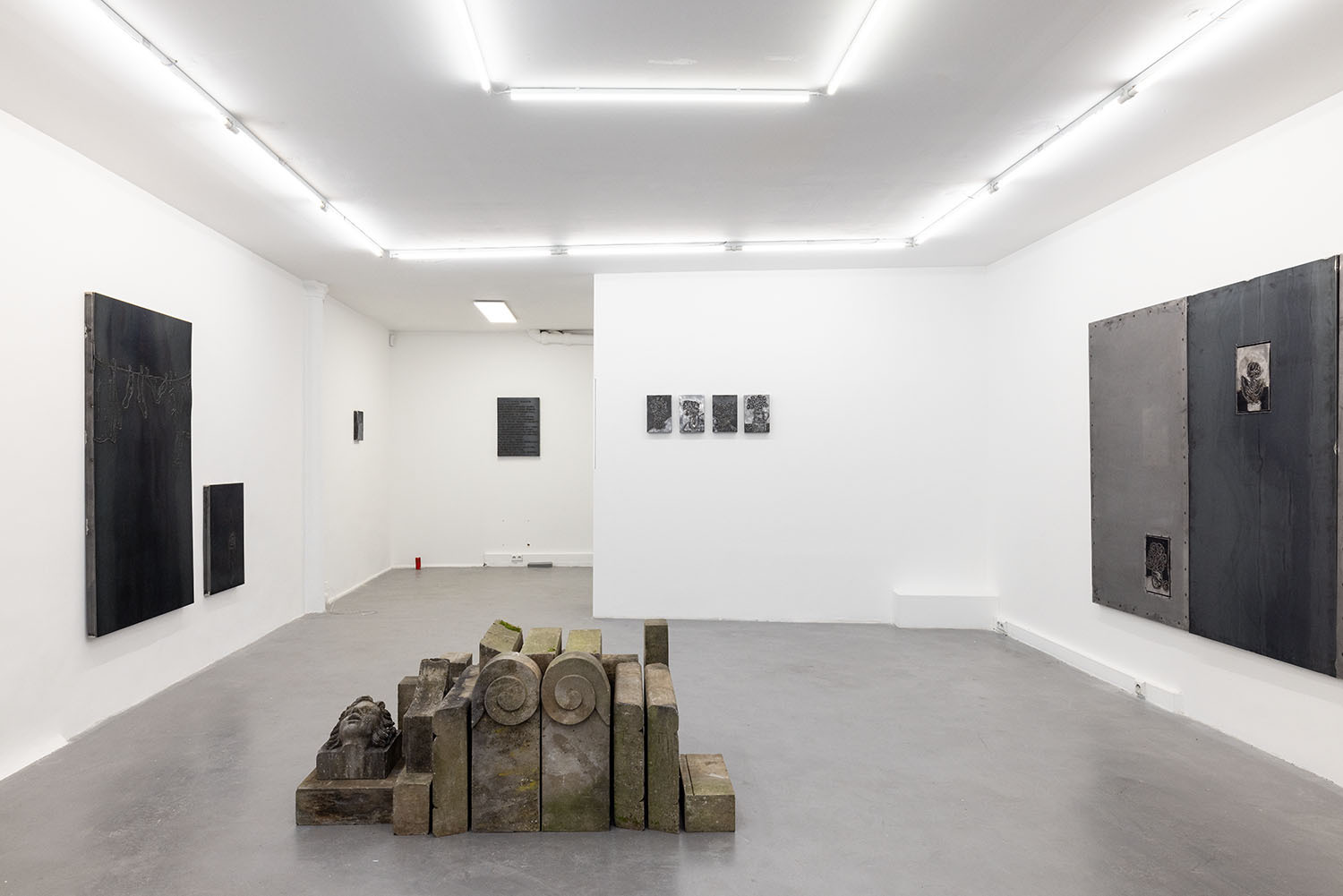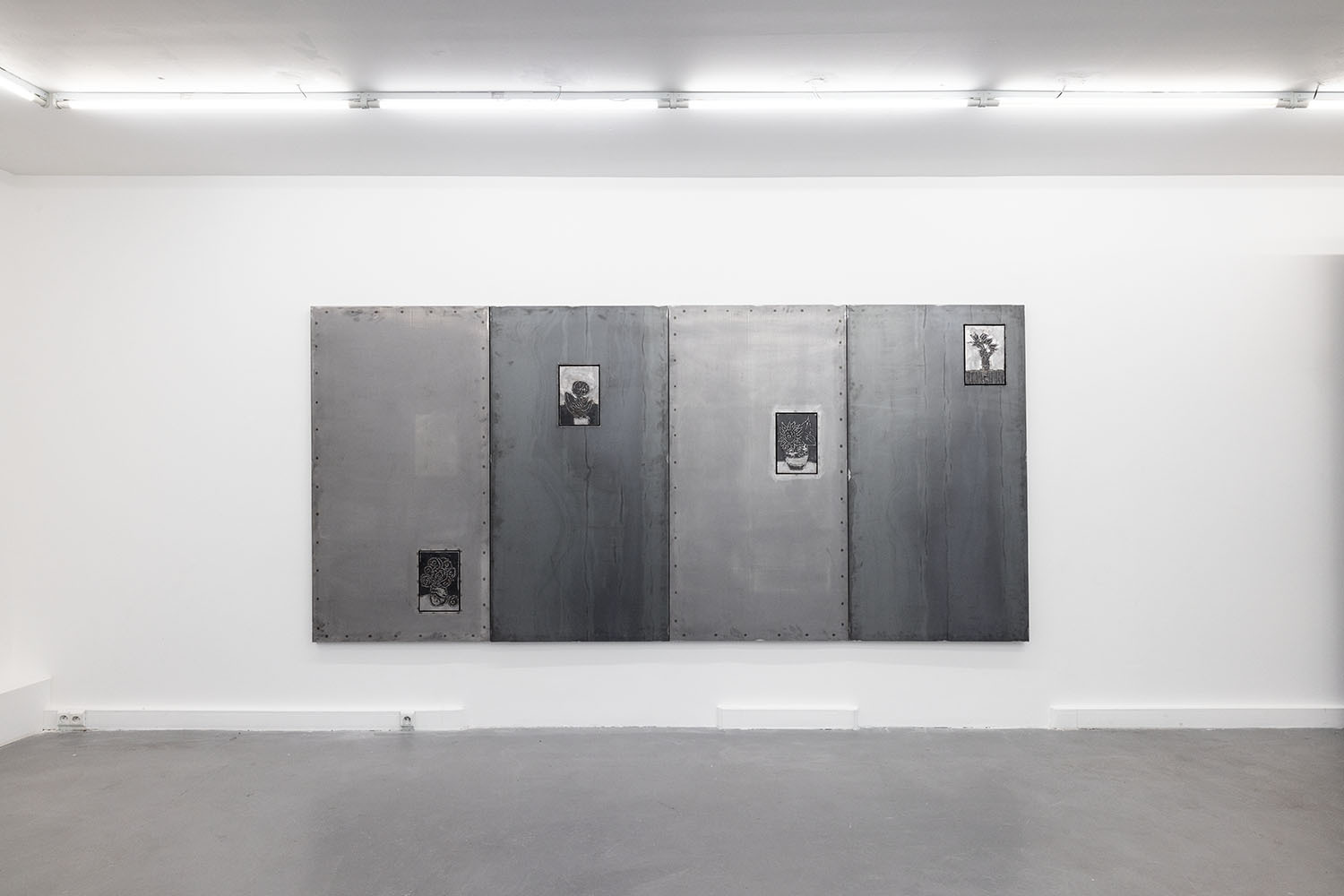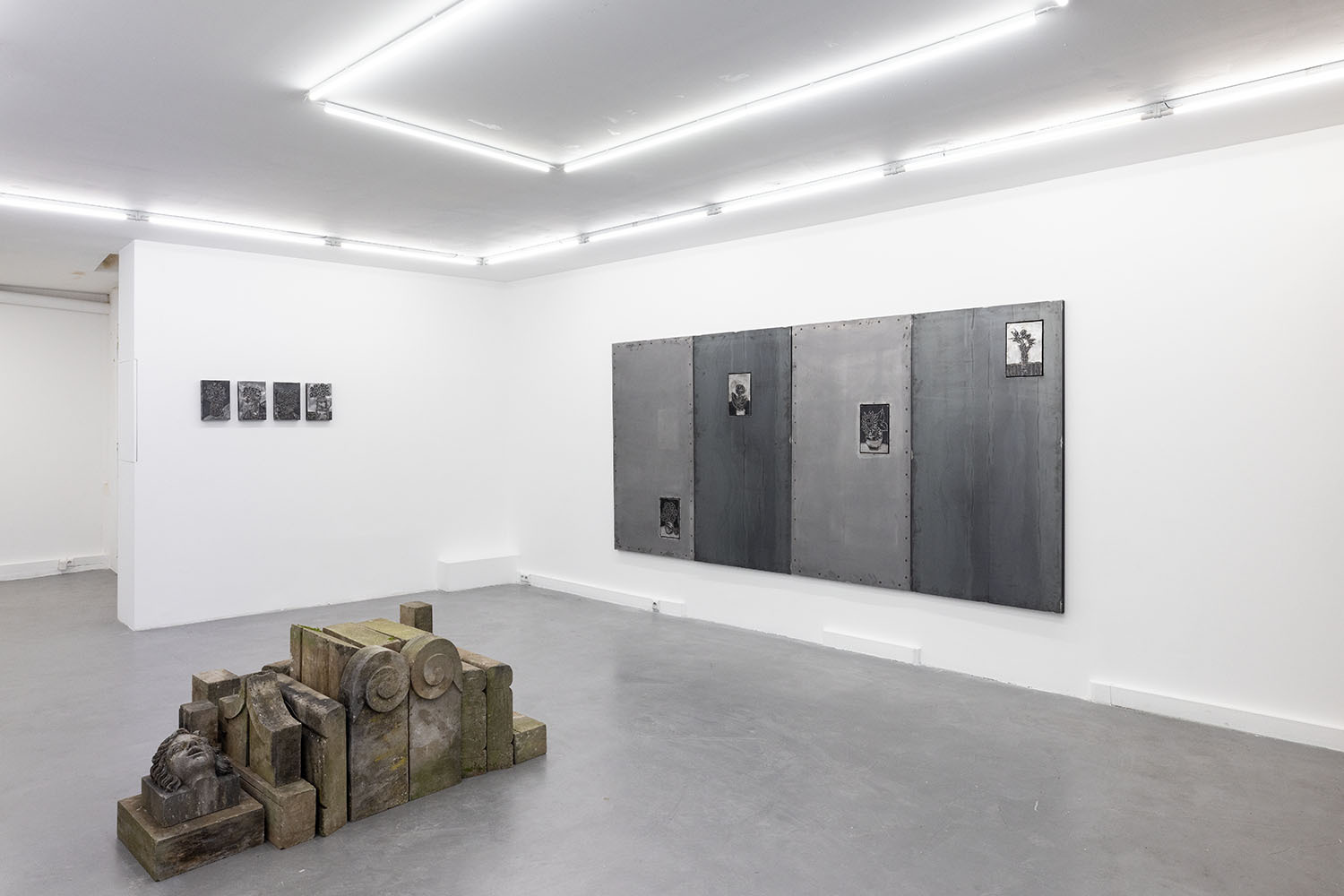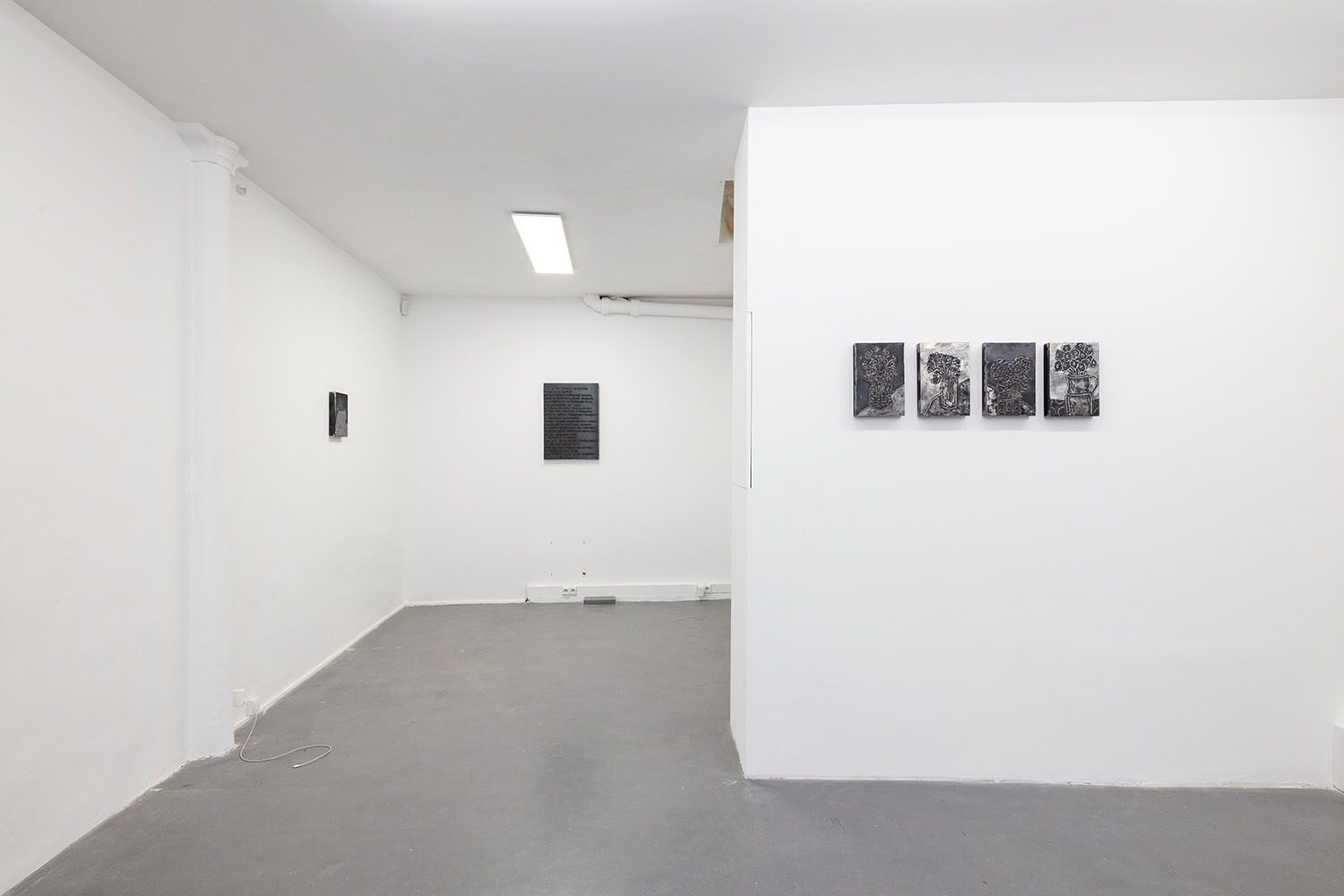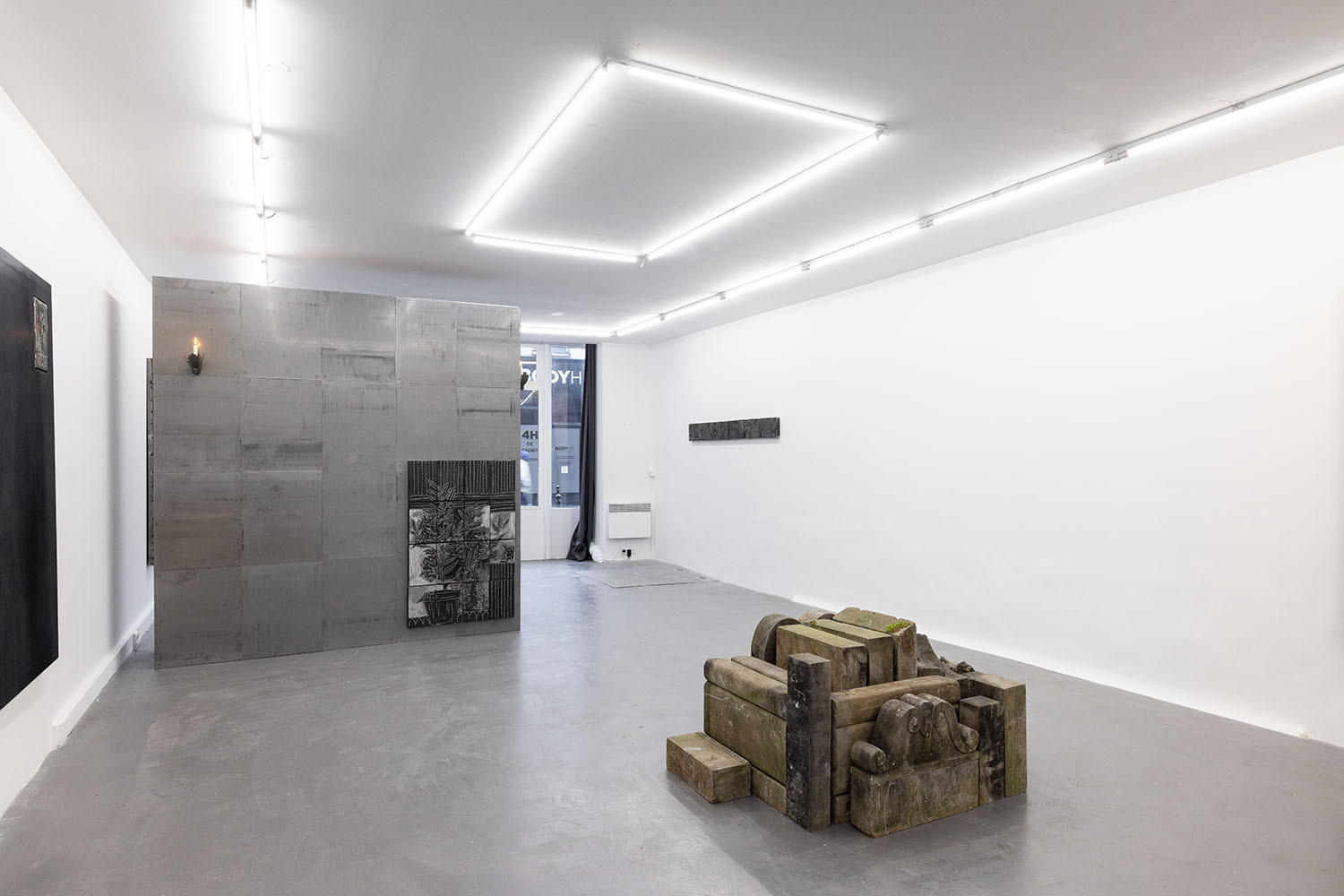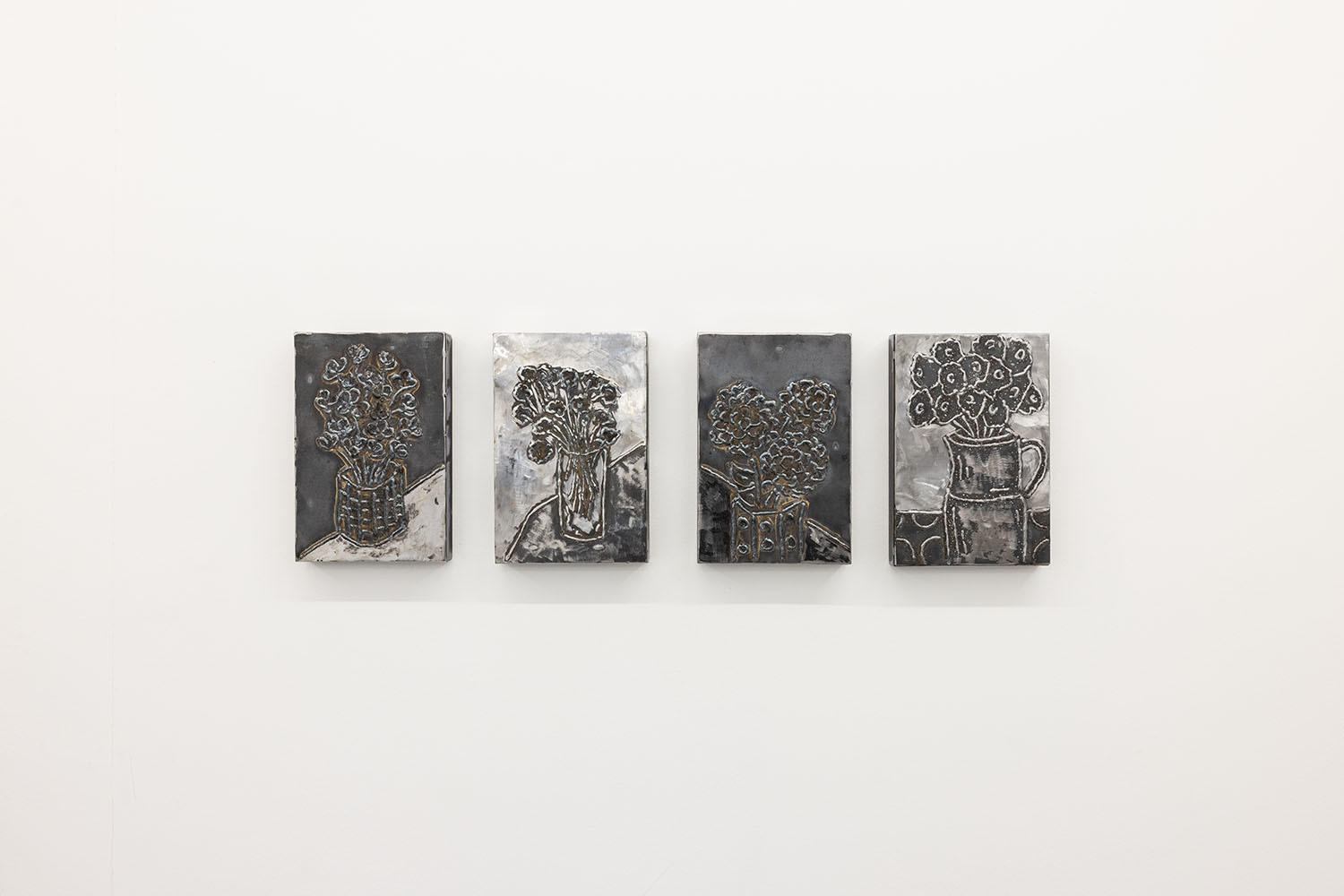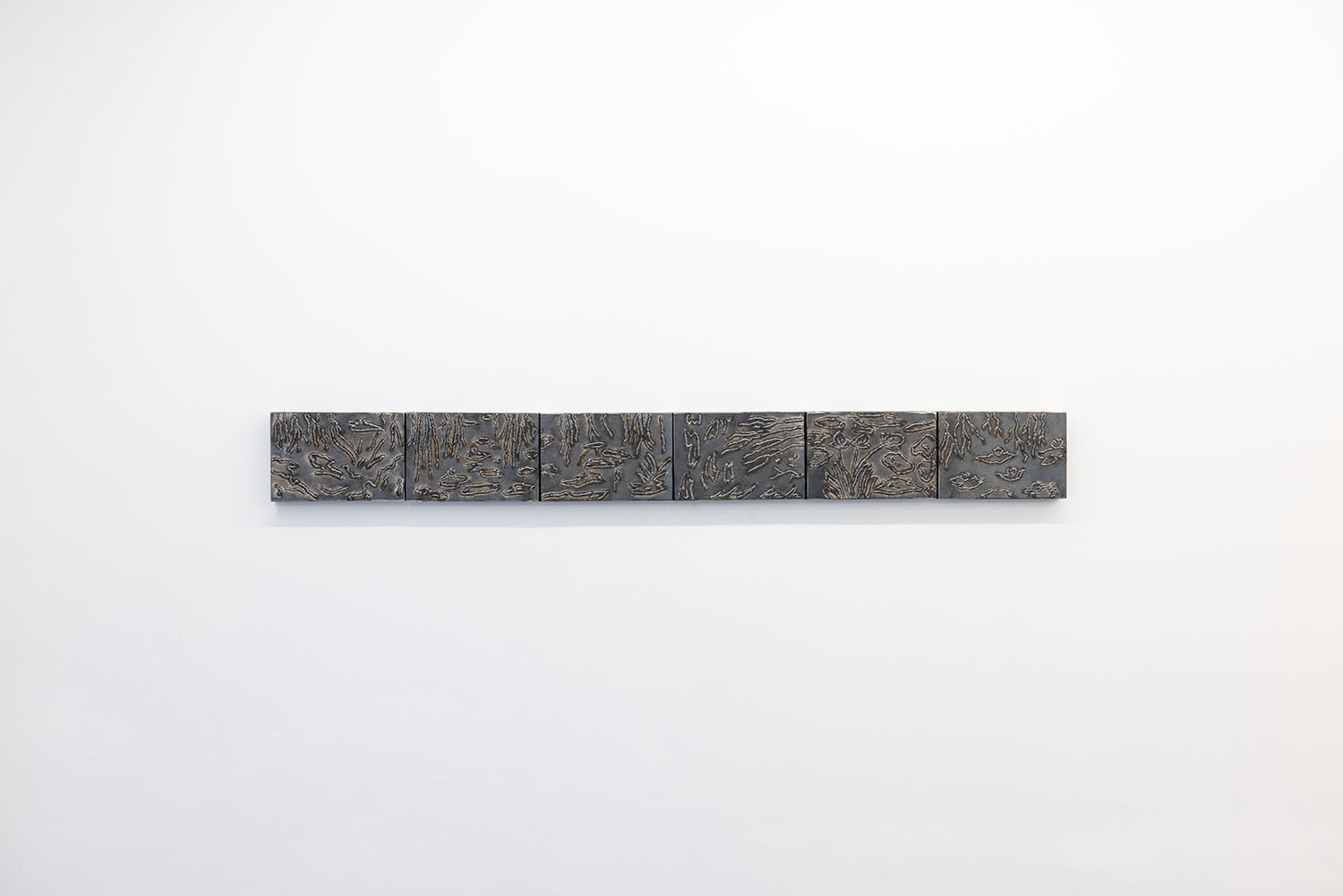Exhibitions
"An unknown memory persistently flees towards increasingly distant eras. The sense of antiquity intensifies."
Mediterranean (dir. Jean-Daniel Pollet, text by Philippe Sollers, 1963)
A head passes through the window, and, sitting there in the street, the Past greets it. With an ancient gesture, indeed, but genuine, cordial, and disturbing the order of the present: an emergence. To this head, the Past recalls its memories of a Arcadia yet dissipated, the inimitable indolence of bygone times, but also the assured anchoring of everything known to be irremediable, indelible – of everything that resists loss and disappearance. The end of an era, deliberately or not, often imposes itself as an opportunity to wind up all its material traces. Statues are shattered, walls fall, fountains are dismantled; what dares to stand from previous times is dislodged. Yet, from the depths of ages, gestures, words, and attitudes faintly but surely survive, seemingly impervious to complete erasure.
In a corner of Matisse Mesnil's studio in Aubervilliers, a heavy metal plate lying on the floor compulsively repeats in Italian: "Sopravvivo, sopravvivo, sopravvivo, sopravvivo, sopravvivo (etc.)… forse"; which means "I survive, I survive... maybe." In Italian, yes; but it is above all the language of the urgency to live and the conjuration of death that it’s spoken. Nearby, leaning against the wall, another plate in the same language gathers the last verses of La Ginestra, the penultimate poem that Giacomo Leopardi composed in the spring of 1836 as an ode to the broom plant, before leaving never to return. The broom, however, continues to sprout and spread, this "fragrant broom, satisfied, facing the desert, the doom," as the late Antonio Negri interpreted it in a beautiful book dedicated to the monument of Italian literature. The broom is content with the most arid, poorest, and most reluctant lands; it also rushes onto soils where everything needs rebuilding, like those buried by the ashes of Vesuvius in 1906 – whether black or yellowish. Regardless, it regains footing, stands alone in the midst of abandonment and nudity. It effectively explores fertility in the most extreme destitution, in a form of "very high poverty" found only in monks and, as philosopher Giorgio Agamben testified, that represented an additional dimension to the rich life they knew. And it is indeed in the encounter of ruin and transcendence that one surprisingly finds oneself surviving.
Thus, discreet signs surface on the steel canvas that Matisse Mesnil works as both a page and a stone, between inscription and sculpture. They bubble the metal, as if trying to ascend its thickness to the open air – to figuration, so to speak – as if refusing to drown and be confined. Just as lava rises from the Earth's depths, just as memories sometimes climb the deepest faults of memory, all these signs release themselves in their own way from the grip of metal, usually reserved for prison doors or safes, assumed impenetrable, screening our demand to see and know.
These signs, whether in the form of a cloud that could just as well be a stain, of flowers that look like scars, of drying linens, or letters forming a poem, they act like the past that never truly extinguishes. Leopardi affirmed this, defying the "superb and vain century" in which he lived; in his Theses on the Concept of History (1940), Walter Benjamin shared his critique of progress and confirmed it by calling to "blast the continuum of history." Simple questions, posed by Benjamin in the same text, shake a linear conception of historical time: "Do we not feel a faint breath of the air in which yesterday's people lived? Do not the voices we listen to bring echoes of voices now extinguished?"
Water no longer flows from the open mouth of a stone figure that was once a fountain ; it now delivers the whispers of the departed, the soft-spoken words of those who have long known death. To these voices, Matisse Mesnil lends an ear. His work gives them a voice again, offering a contemporary stage to bygone times and materializing their ability to stand firm against the flow of time. However, it is not to tell the grand story – of conflicts and conquests, crowned or decapitated heads – but rather to render, in all its fragile beauty, what in the subtle manifestations of daily life reminds us of the humble past. Indeed, gestures traverse the centuries, like stretching a clothesline, carving adolescent loves into the crumbling stone of a wall, composing a bouquet of flowers, or leaning against a window listening to the gentle music of an Italian square.
Beneath the veneer of reality beats the heart of myths, and these consume themselves at the level of walls and on the ground itself. Facing the entirely commodified present, a past persists, staged by Matisse Mesnil, allowing us to imagine the sensory life of a street that could have preserved the legacy and resonated with calls to contemplation. He does not call for a nostalgia without recourse, but proposes an "immersion in the infinite," as Negri said about Leopardi's song. To the attentive eye, a multitude of traces is offered, affirming that what we think is lost reminds us that precisely not everything is lost, and that the long time of history is not a matter of fall or elevation but of fluctuations to which one must remain sensitive – of survivals, resistances to the supposed march of progress. Because it comes to us as an offering, the presence of these traces invites us to consider, as Benjamin said, that "we have been expected on earth."
Text by Guillaume Blanc
Mediterranean (dir. Jean-Daniel Pollet, text by Philippe Sollers, 1963)
A head passes through the window, and, sitting there in the street, the Past greets it. With an ancient gesture, indeed, but genuine, cordial, and disturbing the order of the present: an emergence. To this head, the Past recalls its memories of a Arcadia yet dissipated, the inimitable indolence of bygone times, but also the assured anchoring of everything known to be irremediable, indelible – of everything that resists loss and disappearance. The end of an era, deliberately or not, often imposes itself as an opportunity to wind up all its material traces. Statues are shattered, walls fall, fountains are dismantled; what dares to stand from previous times is dislodged. Yet, from the depths of ages, gestures, words, and attitudes faintly but surely survive, seemingly impervious to complete erasure.
In a corner of Matisse Mesnil's studio in Aubervilliers, a heavy metal plate lying on the floor compulsively repeats in Italian: "Sopravvivo, sopravvivo, sopravvivo, sopravvivo, sopravvivo (etc.)… forse"; which means "I survive, I survive... maybe." In Italian, yes; but it is above all the language of the urgency to live and the conjuration of death that it’s spoken. Nearby, leaning against the wall, another plate in the same language gathers the last verses of La Ginestra, the penultimate poem that Giacomo Leopardi composed in the spring of 1836 as an ode to the broom plant, before leaving never to return. The broom, however, continues to sprout and spread, this "fragrant broom, satisfied, facing the desert, the doom," as the late Antonio Negri interpreted it in a beautiful book dedicated to the monument of Italian literature. The broom is content with the most arid, poorest, and most reluctant lands; it also rushes onto soils where everything needs rebuilding, like those buried by the ashes of Vesuvius in 1906 – whether black or yellowish. Regardless, it regains footing, stands alone in the midst of abandonment and nudity. It effectively explores fertility in the most extreme destitution, in a form of "very high poverty" found only in monks and, as philosopher Giorgio Agamben testified, that represented an additional dimension to the rich life they knew. And it is indeed in the encounter of ruin and transcendence that one surprisingly finds oneself surviving.
Thus, discreet signs surface on the steel canvas that Matisse Mesnil works as both a page and a stone, between inscription and sculpture. They bubble the metal, as if trying to ascend its thickness to the open air – to figuration, so to speak – as if refusing to drown and be confined. Just as lava rises from the Earth's depths, just as memories sometimes climb the deepest faults of memory, all these signs release themselves in their own way from the grip of metal, usually reserved for prison doors or safes, assumed impenetrable, screening our demand to see and know.
These signs, whether in the form of a cloud that could just as well be a stain, of flowers that look like scars, of drying linens, or letters forming a poem, they act like the past that never truly extinguishes. Leopardi affirmed this, defying the "superb and vain century" in which he lived; in his Theses on the Concept of History (1940), Walter Benjamin shared his critique of progress and confirmed it by calling to "blast the continuum of history." Simple questions, posed by Benjamin in the same text, shake a linear conception of historical time: "Do we not feel a faint breath of the air in which yesterday's people lived? Do not the voices we listen to bring echoes of voices now extinguished?"
Water no longer flows from the open mouth of a stone figure that was once a fountain ; it now delivers the whispers of the departed, the soft-spoken words of those who have long known death. To these voices, Matisse Mesnil lends an ear. His work gives them a voice again, offering a contemporary stage to bygone times and materializing their ability to stand firm against the flow of time. However, it is not to tell the grand story – of conflicts and conquests, crowned or decapitated heads – but rather to render, in all its fragile beauty, what in the subtle manifestations of daily life reminds us of the humble past. Indeed, gestures traverse the centuries, like stretching a clothesline, carving adolescent loves into the crumbling stone of a wall, composing a bouquet of flowers, or leaning against a window listening to the gentle music of an Italian square.
Beneath the veneer of reality beats the heart of myths, and these consume themselves at the level of walls and on the ground itself. Facing the entirely commodified present, a past persists, staged by Matisse Mesnil, allowing us to imagine the sensory life of a street that could have preserved the legacy and resonated with calls to contemplation. He does not call for a nostalgia without recourse, but proposes an "immersion in the infinite," as Negri said about Leopardi's song. To the attentive eye, a multitude of traces is offered, affirming that what we think is lost reminds us that precisely not everything is lost, and that the long time of history is not a matter of fall or elevation but of fluctuations to which one must remain sensitive – of survivals, resistances to the supposed march of progress. Because it comes to us as an offering, the presence of these traces invites us to consider, as Benjamin said, that "we have been expected on earth."
Text by Guillaume Blanc
Share
Press
 BACK
BACK